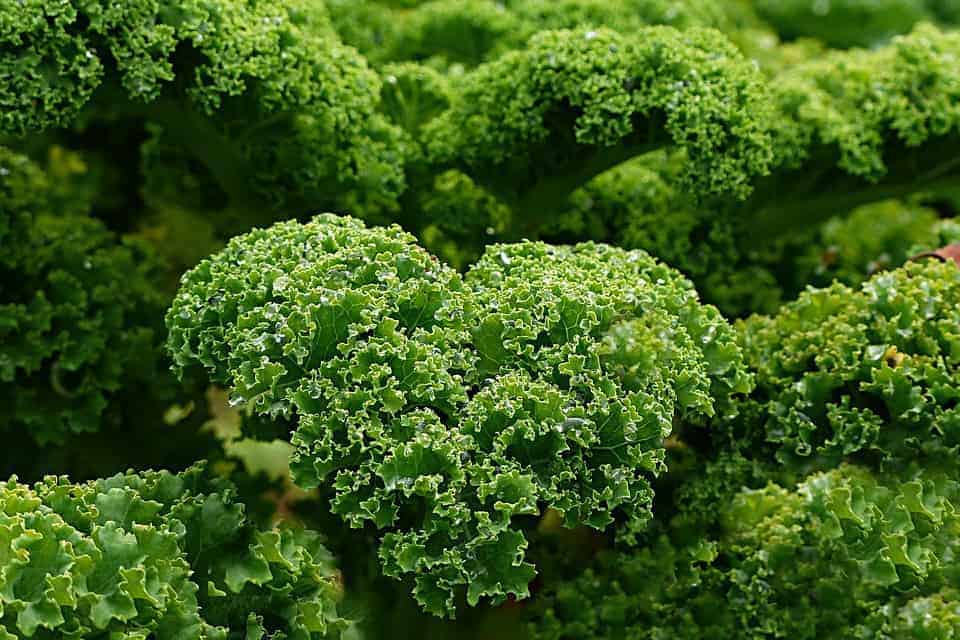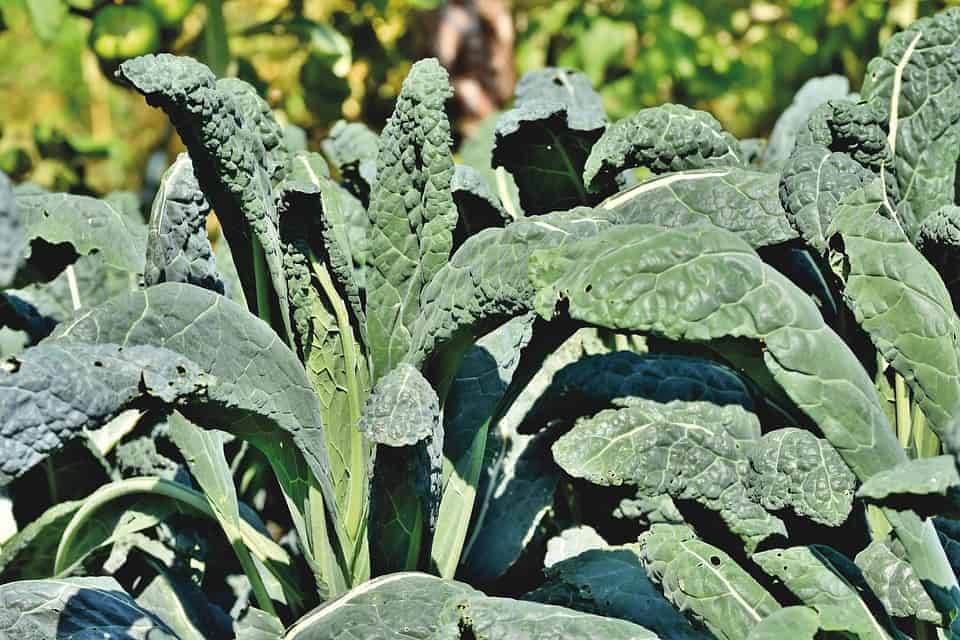If you’re just getting into gardening or you’re a seasoned gardener thinking of growing more greens, or you’re just a kale lover, you need to start thinking about growing your own kale. Gardening and growing your own vegetables in general is a fantastic activity to get some sun, light exercise, fresh air and fresh food. But homegrown kale has more benefits to your health and even your pocketbook.
Benefits of Growing Your Own Kale
On this page:
1. You know your homegrown kale is free of pesticides, herbicides, and harmful bacteria.
Listeria, E. coli, glyphosate, chlorpyrifos. You’re not a scientist, yet you’re already familiar with a plethora of harmful bacteria and agrochemicals, and for all the wrong reasons. It seems like every month there are food recalls of vegetables, especially leafy greens like kale, lettuce, and baby spinach.
There are several reasons for this. E. coli and Listeria on leafy greens is due to unsanitary conditions on some farms, or the use of uncomposted manures as fertilizer. Sometimes even a cattle ranch upstream from the farm can contaminate the water source used for irrigation. Since most leafy greens like kale grow near the ground, you’re more likely to get them contaminated than, say, tomatoes on the same farm. Still, most farms, even if they use composted manure, will likely not have a serious contamination issues. However, when you buy bags of chopped kale (or lettuce), they are often mixed with kale from many farms. So, tainted kale from one farm can contaminate an entire batch of packaged kale.
 Agrochemicals like pesticides, herbicides, and fungicides are ubiquitous in modern agriculture, and their residues (leftover traces) can be found in almost every food. There are even reports that herbicide residues are found in many prepackaged foods like children’s cereals and granola bars as well as fresh vegetables. In the case of kale, the biggest culprit is pesticides. Kale is now one of the most pesticide-laden vegetables on the market according to an analysis by the Environmental Working Group.
Agrochemicals like pesticides, herbicides, and fungicides are ubiquitous in modern agriculture, and their residues (leftover traces) can be found in almost every food. There are even reports that herbicide residues are found in many prepackaged foods like children’s cereals and granola bars as well as fresh vegetables. In the case of kale, the biggest culprit is pesticides. Kale is now one of the most pesticide-laden vegetables on the market according to an analysis by the Environmental Working Group.
When you grow your own kale, you choose how to fertilize it and how to control pests. Kale has a few pests and you can use organic methods to prevent or control them, from manually removing small white butterfly eggs to spraying aphid with organic insecticides to using physical barriers like insect cloth or netting.
2. Homegrown vegetables, including kale, are more nutritious than those in the store.
Not only is homegrown kale safer to eat, it’s more nutritious as well. Kale is one of the most nutrient-dense vegetables. While kale will produce its own vitamins and antioxidants, all the rich minerals in kale are actually taken up from the soil. When kale is cultivated on a farm, they are often grown using chemical fertilizers, which may be lacking in some micronutrients. Aside from NPK (nitrogen, phosphorus, and potassium), most chemical fertilizers will have some magnesium and calcium. But kale also needs small amounts of iron, sulfur, copper, manganese, and zinc, which can often be lacking in synthetic fertilizers.
When you grow at home, you can choose how to fertilize your soil. I recommend, if possible, to use rich compost and slow-release organic fertilizers. You can also feed your kale with high-nitrogen blood meal, alfalfa meal, or fish fertilizer (fish fertilizer is quite smelly but a great all-around plant food). And of course you can still use chemical fertilizers if you need to give your kale a quick boost. So, when you grow your own kale, you decide how to enrich the soil, and those minerals in the soil will be taken up by your kale and into your body.
3. Growing your own kale can be cheaper than buying it at the supermarket and is a safety net for food supply chain shortages.
Gardening can be an expensive hobby, but it doesn’t have to be. Really, all you need is some decent soil and some space to grow kale. But as you cultivate your garden, year after year, you can save a ton of money on fresh vegetables.
 Leafy green vegetables like kale are expensive isn’t because they’re difficult to grow, it’s because they spoil quickly. And unlike tomatoes, which are often picked before they ripen (a reason why you should grow your own tomatoes), kale is just a leaf, and the clock starts ticking before it wilts and goes bad. However, growing kale is super easy, and if you use the cut-and-come-again method of harvesting, picking the lower leaves and leaving the top leaves to continue to grow, you can get continual harvests all season.
Leafy green vegetables like kale are expensive isn’t because they’re difficult to grow, it’s because they spoil quickly. And unlike tomatoes, which are often picked before they ripen (a reason why you should grow your own tomatoes), kale is just a leaf, and the clock starts ticking before it wilts and goes bad. However, growing kale is super easy, and if you use the cut-and-come-again method of harvesting, picking the lower leaves and leaving the top leaves to continue to grow, you can get continual harvests all season.
In the best of years, growing your own kale is cheaper than store-bought kale, but after 2020, it’s also insurance against food supply shortages, which affect both the price and availability of kale. The effects of COVID-19 on the food supply (less farm labor, disrupted production, less demand from restaurants, more demand from supermarkets, etc.) mean less kale on the shelves and higher prices – and that’s not even including organic kale. And as you already know, once the prices of vegetables go up, they never go back down.
Another effect of COVID-19, which you might have noticed if you are already a gardener, is that the seed supply has been disrupted as well due to extremely high demand. A lot of folks looking for their favorite kale seeds were out of luck in early 2020. If your kale bolts (produces a flower stalk) and you save the seeds, the next time an event like this happens, you’ll be prepared.
Supermarket kale is already one of the most nutritious greens you can eat, but if you want to eat healthier and cheaper kale, homegrown is the way to go.
